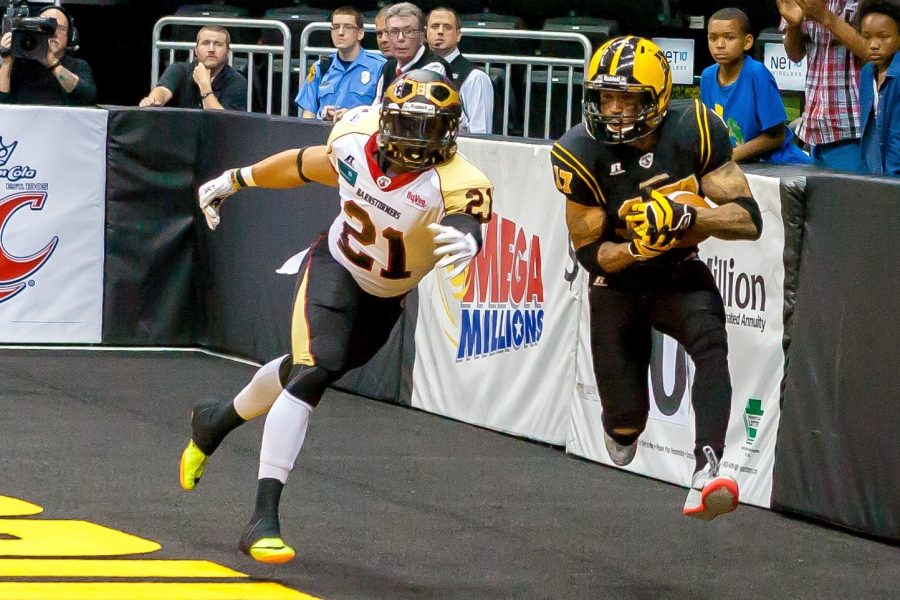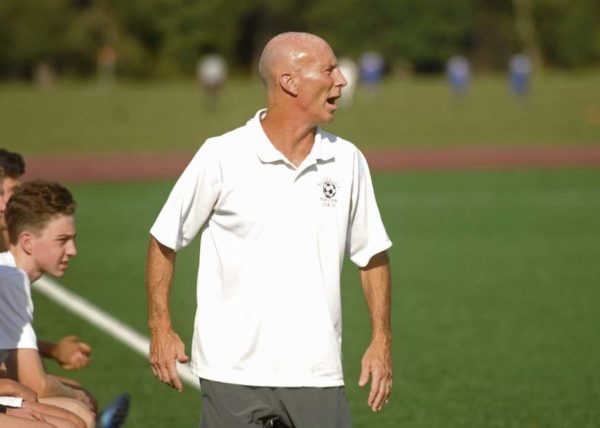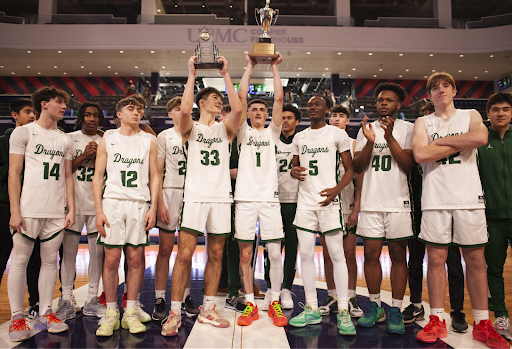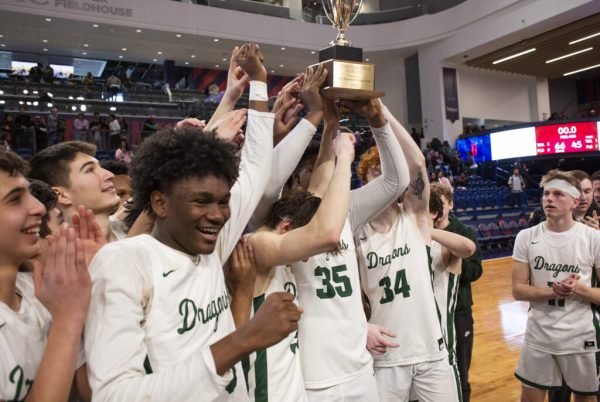Ghosts Of Pittsburgh Sports Past: The AFL’s Pittsburgh Power
When one thinks of football in the Steel City, you can almost guarantee what first comes to their mind. You would be hard pressed to find anyone who didn’t respond with something Steelers-related. But little will most people know, or remember, the Steelers didn’t used to be the only football team based in the city.
For four years, the now-defunct Pittsburgh Power of the Arena Football League (AFL) played football in the Steel City, providing a very different kind of football for fans.
The AFL in general was a very unique concept. Arena football, played inside arenas that were usually built for hockey and/or basketball teams, used fields roughly half the size of traditional NFL or NCAA football fields. This shortened field allowed for greater amounts of points and scoring chances. The goal posts were also adjusted accordingly in sizing.
Roster sizes were also incredibly shortened in comparison to NFL rosters, with 20 players permitted on a game-day AFL roster as opposed to the NFL’s 53. In addition, only 8 players were to be on the field at once during an AFL game, in contrast to 11 in NFL games.
All players on an AFL team played both offense and defense, with the exception of the kicker, quarterback, kick returner, and two defensive specialists.
Punting did not exist in the AFL, meaning teams on fourth down had to either go for it or attempt a field goal. In addition, if a team successfully kicked the ball through the opposing uprights on a kickoff, the kicking team would receive two points, which was known as a deuce.
Lastly, during either a field goal or an extra point kick, a team’s kicker could dropkick the ball instead of having someone hold it, which would award the team an extra point in either scenario. All other forms of scoring followed the NFL standard.
Pittsburgh was originally home to the Pittsburgh Gladiators of the Arena Football League in 1987. The first ever league game for the original AFL was actually played in the old Civic Arena in Pittsburgh, between the Gladiators and Washington Commandos.
Pittsburgh was awarded a new AFL team in 2011, as part of a four team expansion for the league that included San Jose, Kansas City, and Philadelphia.
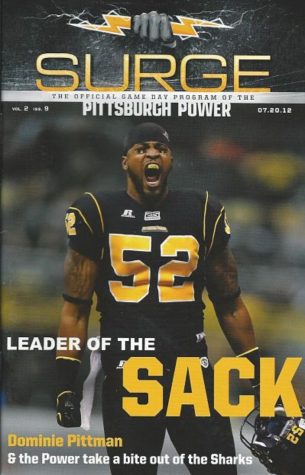
Traditional AFL policy, should a city have previously had an AFL team, was to use the same name for the new team, but since the Cleveland Gladiators were now the holders of the Gladiators monniker, Pittsburgh needed a new team name. After originally rumored to be the River Wizards, the team changed course and ultimately named the team the Pittsburgh Power.
The Power opened their first game in franchise history on March 11, 2011, to a crowd of almost 14,000 fans at Consol Energy Center (present day PPG Paints Arena), losing to the Philadelphia Soul 58-52. The Power had actually gotten off to a pretty good start, at one point 7-4 on the season before collapsing and finishing 9-9, below the playoff line.
Despite the disappointing end to the season, the inaugural season for the Power ended in establishing a decent holding in Pittsburgh, averaging over 9,000 fans a game.
Things would get rocky for the Power the following season, however. The AFL as a whole was struggling, with looming labor stoppages and strikes. The AFL also lost their entire 2009 season due to financial issues.
The Pittsburgh Power were no exception to these pains.
But, to get ahead of the impending stoppage, the Power’s ownership had an ingenious idea: cut the entire team before they could strike.
And there was no better time and place to cut the entire team then while they were dining at an Orlando-area Olive Garden.
The players were hoping to increase their game checks from $400 a game to $1,350, while the league was offering an increase way below that.
The Power had given their players the option to leave the players union and re-sign with the club under the terms of their previous contracts, as did the Orlando Predators, the team the Power was set to face in Week 1.
The union ultimately did go on strike, but several Power players left the union and signed with Pittsburgh again, and they, along with many replacement players and strike breakers, led the Power to a season-opening victory against Orlando.
In the days after the game, the Power had offered jobs to 22 of the 24 players they had cut, with 18 immediately signing and a 19th signing shortly after.
About a month later, in a separate matchup against Orlando, the Power staged the largest comeback in league history, coming all the way back from 48-17 down to win the game in overtime 57-54. Unfortunately for the Power, this would be one of the few highlights of the season, as they finished the year with a 5-13 record, including a brutal 1-8 record at home.
Labor disputes continued to be a problem for the AFL, with the Power actually being credited with a win after the Cleveland Gladiators did not have enough people on their roster to play the game, and had to forfeit. It was the first forfeit in league history.
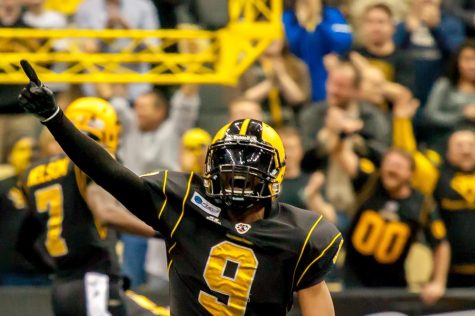
The 2013 season didn’t fare much better for the Power, going 4-14 on the year, including a 7 game losing streak in the middle of the season. At this point, attendance was also way down for the Power, who were second to last in the AFL in attendance, only averaging around 5,800 fans a game, which was above only Chicago and New Orleans in the entire league.
The 2013 season marked the second straight season the Power finished last place in their division, and also extended their playoff-less streak, active since their inception.
During the ensuing off-season, the Power would make major shakeups to their roster, trading away franchise leading receiver Mike Washington for quarterback Arvell Nelson, as well as picking up quarterback Tommy Grady in the dispersal draft of the Utah Blaze, who were set to fold after the 2013 season.
By the time the Power had finished re-crafting their roster, only 4 players on the team were members of the Power the previous season.
In February of 2014, Pittsburgh-based Trib Total Media purchased a multi-million dollar stake in the team, joining an ownership that had already included Matt Shaner and former Steelers star wide receiver Lynn Swann.
The moves paid off quite well for the Power, with the 2014 season being by far their best season in franchise history. After a loss to open the season, the Power fired head coach Derek Stingley Sr. (the father of current Houston Texans cornerback Derek Stingley Jr.), and replaced him with Ron James, who was able to guide the team to a 15-3 overall record, with the Power winning their last 12 games of the season.
The team’s attendance also saw a slight bounce back, up almost 1,000 fans on average than 2013, but that number was still only good for 11th best in a league of 14 teams.
However, their first run in the playoffs was short lived, losing their first ever playoff game to Orlando by a final score of 56-48.
The Power would soon be cut (pun definitely intended).
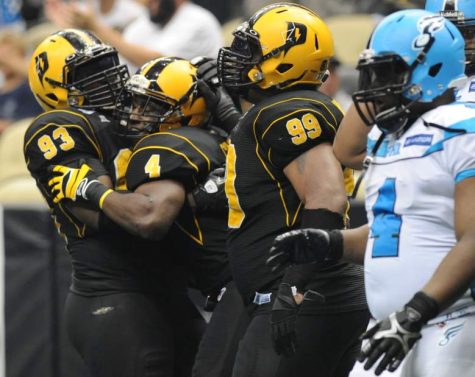
On November 17, 2014, ownership announced, somewhat abruptly, that the Power would be ceasing operations, and thanked Pittsburgh for their time playing in the city.
The decision to end operations was a curious one, as the Power looked as though they were starting to turn a corner, and had recently signed an extension on their lease with Consol Energy Center.
The Power would end their run with a franchise record of 33-40, one playoff appearance, and no postseason wins. While the entire concept of arena football was very interesting, the Power could never fully gather a large enough audience in Pittsburgh.
After their inaugural season, the Power experienced an over 40% drop in average attendance, from 9,197 in 2011 to 5,163 in 2012, and could never beat 6,500 the rest of their existence. While they did achieve routinely getting thousands of fans through the doors, their numbers were always near the bottom of the league.
But their struggles were not uncommon.
The Arena Football League itself was on its last legs by the time the Power folded. After the 2015 season, both the New Orleans VooDoo and Las Vegas Outlaws ceased operations, and were followed by the Spokane Shock jumping ship to the Indoor Football League a month later.
The following season, the league took control of the struggling Portland Thunder.
While the league was still occasionally successful in adding new teams, like the Washington Valor, more teams were leaving than being added.
In October 2016, both the Orlando Predators and Jacksonville Sharks announced they were leaving the league. Also in that month, the Arizona Rattlers were planning to jump to the IFL, and the Portland Steel (who were renamed after the AFL’s takeover of the team) and Los Angeles Kiss (yes, that was their real name) were also likely to cease operations.
By the time the 2018 season schedule was announced, the AFL had only four teams remaining, but were able to expand to Atlantic City and re-expand to Columbus for 2019. However, at this point, it was only a matter of time.
Despite their last gasp efforts to survive, the Arena Football League officially shut down on November 27, 2019.
As of February 2023, the AFL plans to return in 2024, but could face steep competition, likely competing with the second iteration USFL, who are getting set to start their sophomore season in March, and the third iteration of the XFL, who just kicked off their season.
Check out more of the Ghosts Of Pittsburgh Sports Past series:
Alex Kiger is a Senior at Pittsburgh Allderdice High School. He is the Sports Editor at The Foreword from 2021 to 2023. In his free time he can often be...


